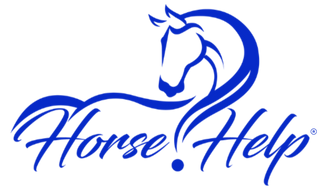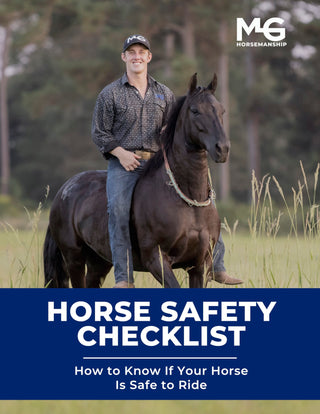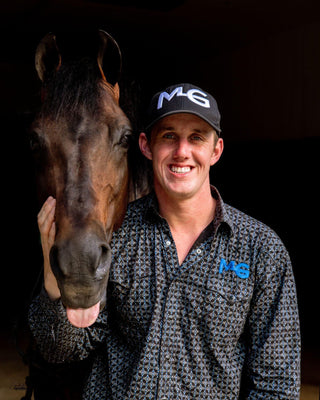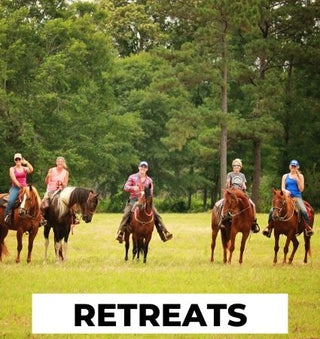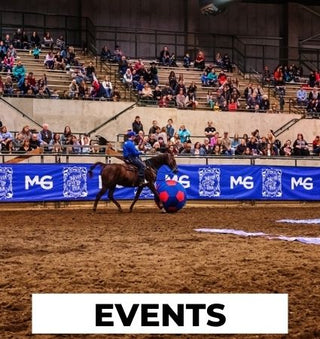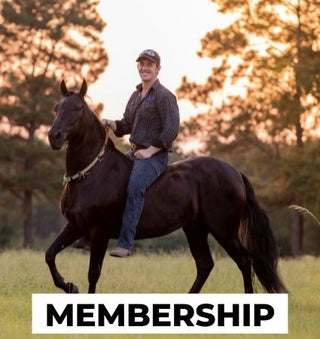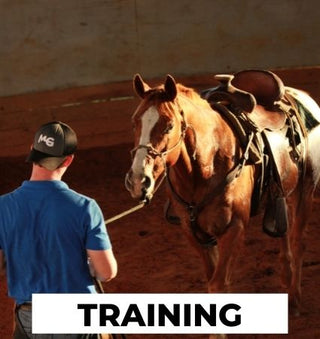Watch the Video Here or continue reading below!
Roping is one of the most exciting and practical skills in Western horsemanship, but it can feel intimidating if you’ve never picked up a lasso before. Whether you're dreaming of catching cattle, competing in rodeo events, or just adding a new tool to your horse training toolbox, this intro to roping will break it all down in a clear, easy-to-follow way.
This beginner roping guide covers everything you need to know—from how to hold your rope to swinging technique, loop control, and pulling slack. Let’s rope!
What You Need to Start Roping
Before you can rope your first dummy or cow, gather these basic tools:
-
Soft lasso rope (extra soft is best for beginners)
-
A target like an old bucket (this will act as your practice dummy)
These simple tools will help you master your roping fundamentals without the frustration of tangles or injury.
Know Your Rope: Coils, Honda, and Slack
To rope properly, you need to understand the parts of your rope:
-
Coils – The loops of rope you hold in your non-throwing hand.
-
Honda – The small fixed loop that creates the working end of your lasso.
-
Slack – The extra rope that feeds out when you throw; critical for clean catches.
Step 1: Practice Without a Loop
Start without forming a loop. This helps you focus on wrist movement and rhythm.
-
Hold the coils in your non-dominant hand
-
Raise your elbow so it's level with your shoulder
-
Swing using only your wrist, not your whole arm
-
Keep your swing level—like helicopter blades
This basic motion is the foundation of all good roping technique.
Step 2: Build Your Roping Loop
Once you're comfortable with the wrist swing, it’s time to build your loop.
-
Pull rope through your coils to form a loop the size of your body (shoulder to ground)
-
Keep the Honda at arm’s length
-
Resume swinging, now with the loop in motion above your head
Aim for a flat, even swing to prepare for your first throw.
Step 3: Aim and Throw Your Rope
When you're ready to aim at your target:
-
Make sure your loop is passing cleanly between you and the bucket
-
Point your palm toward the target like Spider-Man
-
Left-handed? Aim for the top left of the bucket
-
Right-handed? Aim for the top right
-
Step into the throw and release the rope smoothly
🎯 Pro Tip: Don’t grip the coils too tightly—you need to let the rope feed out smoothly, like a fishing reel.
Step 4: Pulling Slack and Learning to Dally
In live roping situations (like roping calves), pulling slack is critical.
-
Once the loop lands, pull the slack to your hip (left or right depending on your dominant hand)
-
After the slack clears your hip, visualize your saddle horn
-
Dally by wrapping the rope around the horn
-
Keep thumbs up for safety and clean wraps
Practicing this step on the ground prepares you for success when roping from horseback.
Train Like a Roper: Daily Practice Tips
When the video creator began learning to rope, they couldn’t hit the bucket from three feet away. Their solution?
“I promised myself I wouldn't start working until I roped the bucket 10 times.”
Consistency is key. Start with:
-
10 successful throws per day
-
Focus on elbow height, even loops, and clean follow-through
-
Track your progress over time
In a few months, you’ll see incredible improvement—even if you're starting from zero.
Why Ground Roping Matters Before Roping on Horseback
You must master your roping fundamentals on the ground before attempting to rope from a horse. Speed and movement add difficulty, so build muscle memory first.
-
Learn how to swing, aim, throw, pull slack, and dally
-
Keep each swing consistent and intentional
-
Get comfortable before adding complexity
When your body knows the movements, you'll be ready for roping from horseback, cattle work, or even competition.
Ready to Learn More About Roping?
If you're passionate about Western horsemanship or want to expand your horse training skills, roping is a fantastic next step. Keep practicing from the ground and stay tuned—we’ll cover how to rope from the saddle in an upcoming post!
